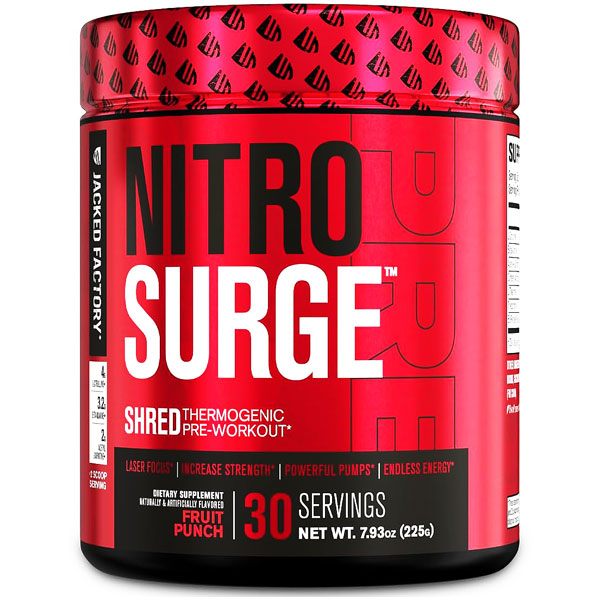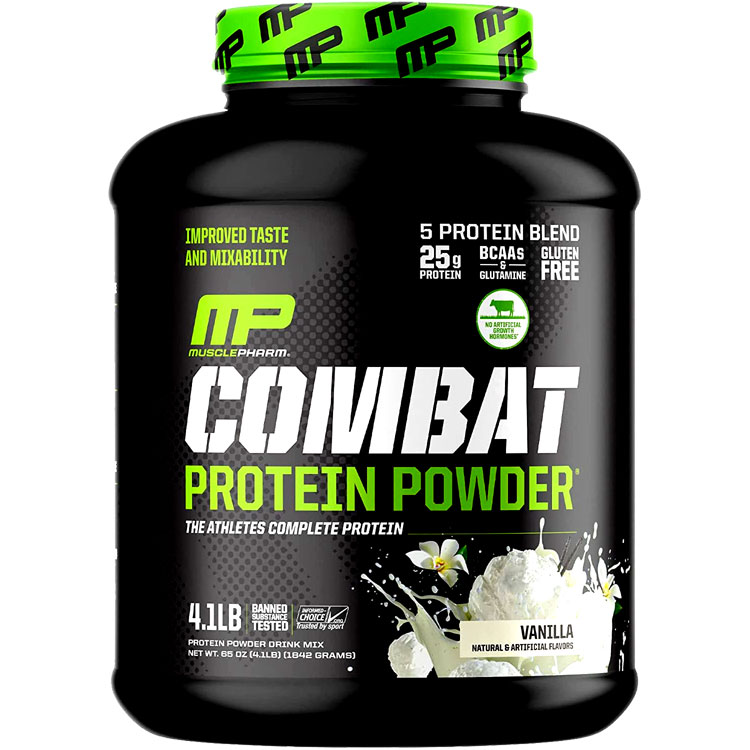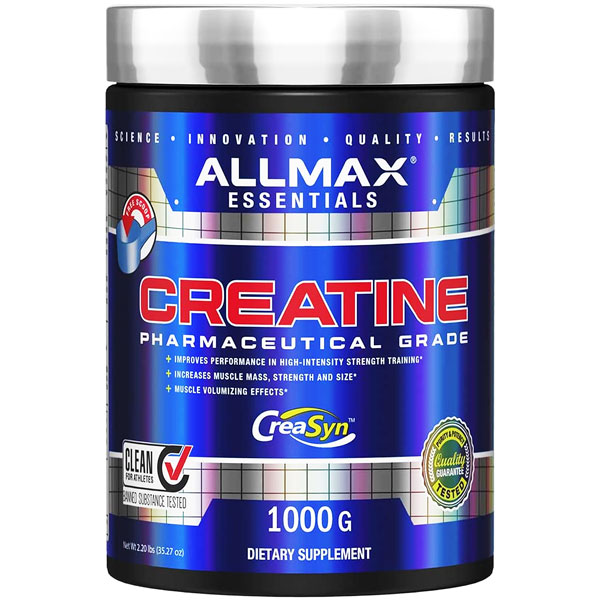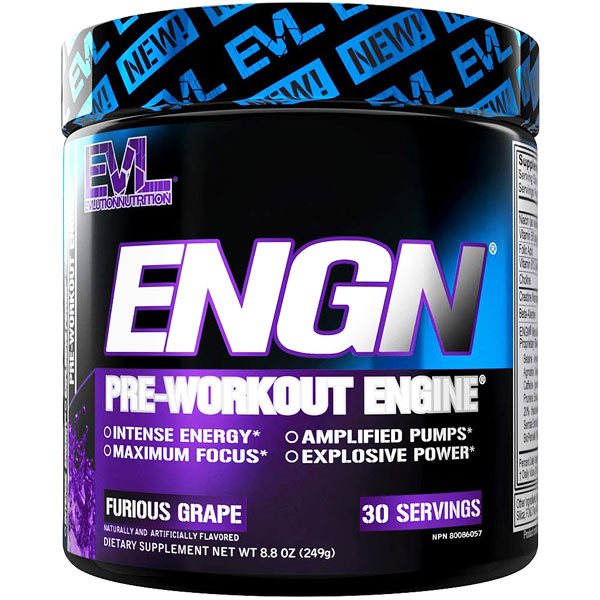
Top Sellers
Top 50 Best Newest Supplements Top Protein Top Pre-Workout Top Post-Workout Top Fat Loss Top Intra-Workout Top Health & Wellness Powerlifting Books
Workout Accessories
Videos
Workout Music
Powerlifting Books
Workout Accessories
Videos
Workout Music
Ads





 By: Dr. Squat (aka: Frederick Hatfield)
By: Dr. Squat (aka: Frederick Hatfield)
So good, in fact, that you MUST do them. I don't care if you're a bodybuilder, a powerlifter or a ballerina. Ya gotta do them! Question is, how? The answer is, as safely as possible without losing any of the benefits! Sorta like drugs, no? The art and science of medicine dictates that while using drugs, you must minimize the risks while maximizing the benefits.
If there's one way to take your iron pill, then, it's in large doses! That means SQUATTING!
In sports, knee problems are high unto a way of life, but squatting isn't the primary culprit. Among bodybuilders who have knee problems, however, squatting is the only culprit. In both cases, squatting properly can reduce, prevent or ameliorate many, many of the common knee problems inherent in sports. That they will make you a better bodybuilder or athlete is an unquestioned fact.
Speaking of the world of medicine and the practitioners thereof, you'll find precious few who have any real, first-hand knowledge of squatting technique or its effects (good and bad) on the knees. One who does is three-time California powerlifting champion Dr. Sal Arria, my fellow co-founder of the International Sports Sciences Association.
He's the guy right behind me in the photo of me squatting 1014 pounds. Dr. Arria, in the ISSA's course text, Fitness: Complete Guide for personal fitness trainers, listed many common knee problems and ways to prevent them. I've drawn heavily from that text in writing this article. I also drew from several other sources (see references).
Keeping your knees healthy and asymptomatic begins with developing a functional understanding of how this unique joint is constructed (anatomy) and how it does and doesn't function (biomechanics).
The knee is a hinge-type joint, roughly equivalent to a door hinge, but with a little "twist" to lock it into full extension. Instead of a fixed axis (such as a door hinge has), however, it's a complicated movement consisting of gliding and rotation in such a fashion that the articulating surfaces are always changing. Hence, the axis is always changing. That can lead to trouble, particularly during unweighted exercises such as leg extensions.
It's almost a law that your quads and hammies should be of approximately equal strength in order to provide "balanced" development. Some experts claim that a ham-to-quad strength ratio of 1 to 1 reduces shear and hamstring pulls. At best, this is mere speculation. When I was a powerlifter, my hamstrings were close to twice or three times the strength of my quads.
Most sprinters are much stronger in the hammie department too, because that's what they all use! If you give attention to muscle balance, beware that speculation is rampant.
Seven different types of tissue comprise the knee - bones, ligaments, tendons, muscles, synovial fluid (bursa), adipose tissue and articular cartilage.
Bone: The bony structures forming the knee joint are the femur, tibia, and the patella.
Ligaments: Fibrous connective tissue which connects bone to bone, providing stability and integrity to the joint. The knee's ligaments are divided into two groups, eight interior and six external ligaments.
Muscle: We all have a clear idea as to what muscles are. Clearly, there are no muscles in the knee joint itself. The ones which act upon the knee joint are all external to the knee. They are listed below:
Tendons: Fibrous bands that that connect the muscles listed above to their bony attachments. The knee's four extensors form a common tendon of insertion called the quadriceps tendon, which connects to the patella, and (below it) the patellar tendon to the tibial tuberosity.
Bursa: A bursa is a pad-like sac or cavity found near areas subject to friction, i.e. joints, particularly those located between bony prominences and muscle or tendon. It is lined with synovial membrane and contains synovia. There are twelve such sacs in the knee.
Adipose Tissue (Fat): For padding.
Articular Cartilage: Cartilage is the connective tissue which provides for a smooth articulation between the bones which form the joint. Cartilage also acts as a shock absorber. The two semi-lunar shaped menisci are the knee's only two cartilages. Located on the tibIal plateau, they cradle the femoral condyles, or the rounded knobs of the lower femur. Since the tibeal plateau is flat, and the femoral condyle is rounded, these two menisci (along with the bursa sacs) provide a better "fit" between these two bony structures.
Two pieces of standard squatting gear - your shoes and knee wraps -should be carefully selected and used, not only to maximize both the short- and long-term health of your knees.
Your shoes are literally where the rubber hits the road. Think of your shoes as the foundation of your leg training sessions. Wearing old or broken down fitness shoes for heavy squatting is like putting old, worn-out tires on a race car! There are several reasons to avoid training in your "tennies."
First, most general purpose fitness shoes simply lack adequate longitudinal or transverse stability, and have little or no arch support for heavy lifting. As you squat, your feet may develop a tendency to pronate, or "cave in" toward the inner side. When this happens, the knees are also forced inward, leading to a constant strain on the medial collateral ligaments, excessive shear force on the meniscus, and improper patellar tracking, which in turn can lead to chondromalacia.
If your feet tend to pronate anyway, or if you're prone to being "knock kneed" (and these two conditions are very often associated with one another), it becomes even more important to select good training shoes.
Another important reason for using specialized shoes for squatting is that they provide a deep and solid heel cup, which prevents the foot from rocking and rolling to the outside, causing great stress on the lateral collateral ligaments of your knees.
Finally, there is a difference between a shoe being worn out and being broken down. Even if your shoes look fine, they still may offer no arch or heel support at all, either because they never had any to start with, or because after months of use, the supports have compressed to the point to where they no longer function as they were intended.
Think about it - a tennis shoe is meant to support a 160 pound tennis player, NOT a 600 pound squat! Loads like these cause the shoe to break down without visual signs of wearing out.
Knee wraps have long been a mainstay for competitive powerlifters, and for good reason. When properly used, wraps can dramatically improve knee safety during heavy squatting. More important, however, is the fact that wraps give you at least a 5-10 percent increase in how much you can lift. But there's a downside to using wraps also.
Wearing them while squatting under 80-85 percent or so is counterproductive to providing adaptive overload to various tissues comprising the knee. Simply, the wrap absorbs the stress instead of the tissues, so they never get stronger.
Guidelines for wearing knee wraps during squatting are as follows:
If you STILL insist on using them, go ahead and do so, but with the following points in mind. When buying knee wraps, opt for the ones that 1) weigh the most (more fabric equals greater protection, and 2) that stretch out to at least 19-20 feet in length (more times around the knee equals greater protection).
Do NOT purchase wraps that are bulky, heavily elasticized and stretch out to under fifteen feet. Tightness from elasticity is NOT affording you any real support!
Here are the steps to go through when putting your wraps on:
An alternative more suitable for fitness and bodybuilding, perhaps, is to wrap tightly around the upper shin (where the patellar ligament attaches), then more loosely wound over the kneecap itself (this is important to avoid grinding the patella into the femoral condyle, creating a case of chondromalacia for yourself), then tightly wound over the lower quarter of the thigh.
The rationale for wrapping the knees prior to heavy squatting is that it reduced the pulling forces on the lower quadriceps and the quadriceps tendon at it's attachment to the patella. This translates to significantly reduced chances of avulsing (detaching) your quadriceps tendon or tearing your quads during heavy squatting. The chances of your patellar tendon avulsing from your tibia are a bit less, but nonetheless omnipresent.
Whenever you squat, hack squat, or leg press, your foot position is an important variable in determining not only the results you'll obtain from the exercise, but also the safety of your knee joints. Although each individual must determine their own best stance exercise per exercise (based on their own anatomical peculiarities such as height and leg length), the following variables must be taken into consideration:
Finally, be very careful in the exit out of the rack, and getting "set" in the squat stance. After lifting the weight off of the pins, you should take just one step backward and immediately assume your squatting stance. This takes time to master, but eventually all the minute adjustments can be pared down substantially.
Once set in the stance, keep your feet "nailed down" for the duration of the set. Many people "fidget" with their feet and toes between reps which can cause a variety of problems ranging from a break in concentration to a loss of balance - and attendant stress on your knees.
Chondromalacia patellae: Softening of the articular cartilage of the patella that is produced by osteoarthritic degeneration. Such cartilage is unsuited for the high compressive loads and frictional forces involved in squatting, and roughening of the underside of the kneecap is common.
Tight quads are responsible for 80% of chondromalacia. Other causes include aging, repetitive overuse, and faulty biomechanics due to genetics.
Patellofemoral Pain Syndrome (PFPS): Exemplified by pain in front of patella, which intensifies during activity. Also, pain during extended sitting, and/or walking up stairs. PFPS is further characterized by crepitus (noise), without instability.
PFPS is considered to be a tracking problem ofthe patella, caused by an imbalance between the medial and lateral quadriceps. The damage to the underside of the patella is not unlike uneven tread wear in a car that needs the tires rotated.
Unstable Knee Joint: Knee suddenly gives out. This is often caused by old injuries which have overstretched the knee ligaments.
Locked Knee: The usual cause of locked knees is a torn meniscus or a loose body within the joint capsule.
Swelling/Tightness: Nearly always indicates an internal injury. See physician immediately.
Crepitus: Noisy knees are no reason for concern, UNLESS accompanied by pain and/or swelling.
Tags: strength life squats
Thanks: Dr. Squat (aka: Frederick Hatfield)
Sponsored Products:

Jacked Factory
NITROSURGE SHRED
Pre-Workout Fat Burner!

MusclePharm
Combat Powder
Muscle Protein!

Allmax Nutrition
Creatine
Highest Grade!

Evlution Nutrition
ENGN
Energy & Focus!
Comments:
Iron Bull
Competition Strength 7mm Knee Sleeves
Weightlifting & Powerlifting (USPA, IPL, IWF & USAW Approved)
Price: $59.99 Get Yours
Get Yours
Iron Bull
Powerlifting Lever Belt
10mm / 13mm Weight Lifting Belt (USPA & IPL Approved)
Price: $89.95 Get Yours
Get Yours